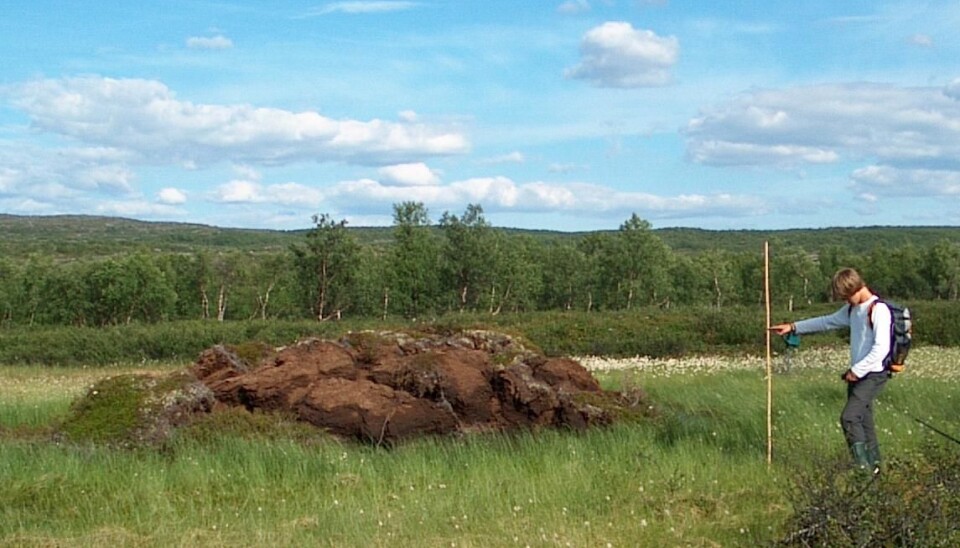An article from University of Tromsø – The Arctic University of Norway

Disappearing palsas
There used to be many hummocks in the bogs around Neiden in northern Norway. But these hills, called palsas, are now disappearing as a result of climate change.
Denne artikkelen er over ti år gammel og kan inneholde utdatert informasjon.
The University of Tromsø (UiT) is participating in a project supported by the EU that is monitoring methane-oxidising bacterial flora in different ecosystems. For their part, UiT researchers are examining what is going on with the palsas found near Neiden.
Palsas are caused by permafrost. A palsa is essentially a turf-covered mound, with a core of ice that rises above the surrounding bog or water surface. The height of the mound varies from less than one metre to several metres, with an area that may cover several hundred square metres.
Great mounds to puddles
A palsa bog system can be very dynamic over time as a result of the formation, growth and breakdown of the palsas. Monitoring data show that palsa bogs in Norway are being altered as a result of climate change.
Rising temperatures and more precipitation cause permafrost to thaw, which in turn decreases the area covered by palsa bogs, according to the Norwegian Institute for Nature Research (NINA) website.

"Palsas are great mounds of soil − but when their ice cores melt, they are transformed into puddles of stagnant water,” says Mette Svenning.
Now the researchers will investigate what it is happening in these palsas. They are full of organic material and when they melt, it's easy to believe that methane is released.
“We will investigate how much methane escapes from palsas," says Svenning.
Hills or mounds on the landscape usually suggest an underlying geological structure, but not always.
The planet is home to amazing biological processes that may explain much of what happens in the ground.
According to Svenning a really great palsa in Neiden disappeared over the course of just four years.
“An elderly local man told us that there were many of these formations in the landscape when he was a child. Now there are only a few left. And we don't yet know whether more methane is released when these palsas disappear," she says.






























